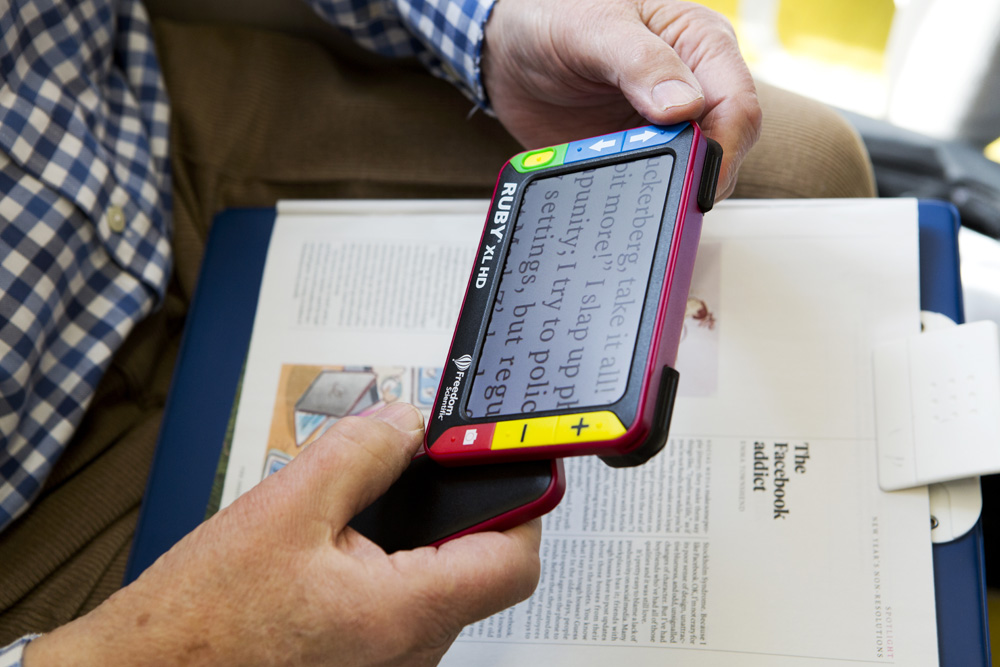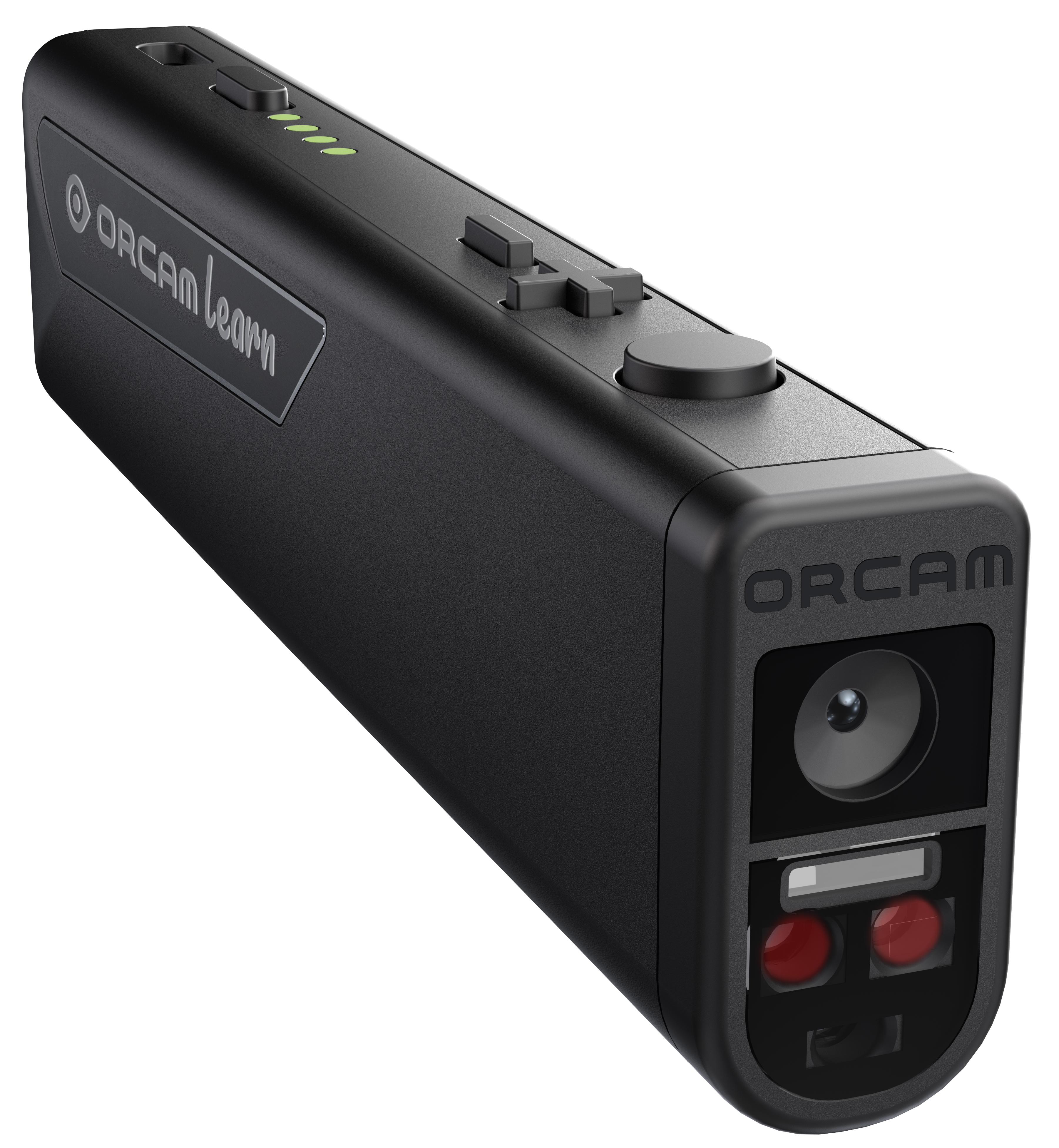OCR Devices for the Blind: Changing Print to Speech in Real-Time
OCR Devices for the Blind: Changing Print to Speech in Real-Time
Blog Article
An Overview to Life-altering Assistive Modern Technology for the Blind and Aesthetically Impaired
The innovation of assistive technology has ushered in a transformative age for individuals who are blind or aesthetically damaged, offering devices that enhance autonomy and improve daily experiences. Innovations such as wise navigation gadgets and AI-driven applications are redefining exactly how users communicate with their surroundings, while accessible reading services and smart home technologies assure to additional boost the top quality of life.
Smart Navigation Tools
Smart navigating devices are reinventing the way people who are aesthetically damaged or blind engage with their environment. These advanced technologies, which integrate GPS, audio comments, and haptic signals, provide individuals with critical info about their surroundings, enhancing their self-reliance and flexibility.
One popular example is making use of wise canes furnished with sensors that find challenges and give real-time feedback with vibrations or audio hints. These devices allow users to browse complicated atmospheres, such as busy streets or crowded public rooms, with enhanced self-confidence. Furthermore, wearable tools, such as wise glasses, are being developed to help in acknowledging faces, reading message, and identifying things, better increasing the individual's spatial recognition.
Furthermore, smart navigation devices are progressively incorporating artificial intelligence to analyze data and adjust to users' choices. This tailored strategy not only boosts navigating performance however also cultivates a feeling of empowerment among individuals. As innovation remains to advancement, the capacity for clever navigation devices to produce a more accessible and comprehensive globe for individuals who are visually impaired or blind remains encouraging, ultimately improving their everyday experiences and communications.
Innovative Mobile Applications
Mobile applications are emerging as powerful devices for aiding people that are blind or aesthetically damaged, using an array of performances that enhance daily living. These apps harness advanced modern technology to help with daily jobs, boost availability, and promote freedom.
One classification of innovative mobile apps focuses on aesthetic acknowledgment. Applications like Be My Eyes connect users with sighted volunteers using video calls, making it possible for real-time aid for tasks such as checking out labels or navigating strange environments. Apps like Seeing AI utilize synthetic knowledge to define surroundings, reviewed text, and determine things, providing users with vital information at their fingertips.
One more significant area is navigation and orientation. Apps such as Aira and Neighboring Explorer provide audio advice, aiding customers browse city rooms with simplicity. They use personalized help, enabling a much more confident expedition of the environment.
Moreover, wellness and health apps accommodate certain requirements, such as drug monitoring and physical fitness tracking. These applications aim to foster a holistic technique to well-being, making certain that customers can keep their health and wellness individually.
Wearable Assistive Gadgets
Wearable assistive tools stand for a significant advancement in innovation made to support people that are blind or aesthetically impaired. These gadgets enhance flexibility and independence by providing real-time feedback regarding the surrounding atmosphere. Amongst the most significant wearable innovations are wise glasses geared up with cameras and sensors, which can identify barriers and relay crucial information via sound hints.

An additional cutting-edge alternative consists of wrist-worn tools that use ultrasonic waves to discover challenges and give navigational help. These devices commonly include customizable settings, permitting individuals to customize the signals to their certain demands.
The combination of expert system in wearable assistive technology is also notable, as it consistently improves the accuracy and responsiveness of these tools. In general, wearable assistive gadgets are changing the lives of the aesthetically impaired and blind, cultivating higher autonomy and boosting quality of life through cutting-edge options.
Available Checking Out Solutions
Available analysis services play a crucial function in allowing people who are blind or aesthetically damaged to engage with text across various formats. These options incorporate a series of tools and modern technologies made to boost reading experiences, from conventional print materials to electronic material.
One prominent remedy is Optical Personality Recognition (OPTICAL CHARACTER RECOGNITION) innovation, which transforms printed text into electronic layout, enabling users to listen to or read the web content using display readers. In addition, specialized e-readers furnished with text-to-speech abilities provide customizable analysis experiences, making it possible Clicking Here for individuals to adjust font sizes and background colors for enhanced visibility.
One more reliable approach is braille screens, which give tactile feedback by transforming electronic text right into braille. This permits individuals to check out touch, cultivating greater independence and accessibility to literature. Mobile applications made for reading scanned books or records can empower users with immediate accessibility to a huge collection of materials (Voice-activated assistive devices).

Smart Home Technologies
Smart home innovations have transformed the way individuals that are aesthetically damaged or blind engage with their living atmospheres, enhancing both self-reliance and safety and security. These cutting-edge solutions utilize automation and connectivity to create an accessible space tailored to the requirements of customers.
Smart audio speakers and voice-activated assistants supply hands-free control over different devices, permitting individuals to readjust lights, safety, and temperature measures via basic voice commands. This functionality minimizes reliance on sighted support and fosters a sense of autonomy. Additionally, wise lights systems can be personalized to supply acoustic feedback or responsive cues, making it possible for individuals to navigate their homes a lot more successfully.
Furthermore, security systems geared up with clever cams and sensors can send real-time alerts to individuals, boosting personal safety without demanding aesthetic confirmation. Automated door locks supply comfort, allowing customers to safeguard their homes easily.
Integrating wise home technologies not just boosts everyday living yet also urges social interaction through attached gadgets - AI-powered visual aids. With continuous improvements in assistive modern technology, the future shows up encouraging, as even more services will arise to further encourage people who are aesthetically impaired or blind, making sure a much more comprehensive and independent lifestyle
Final Thought
Finally, the developments in assistive modern technology for the visually impaired and blind stand for a significant jump towards enhancing self-reliance and quality of life. Smart navigation devices, ingenious mobile applications, wearable devices, obtainable analysis remedies, and wise home technologies collectively promote an inclusive atmosphere. This assimilation of innovation not only improves movement Get More Info and everyday living yet also encourages individuals to engage totally with their environments, advertising higher autonomy and participation in society.
Developments such as clever navigating tools and AI-driven applications are redefining how users engage with their surroundings, while available analysis options and adjustable reading glasses smart home innovations promise to further raise the quality of life. As technology proceeds to breakthrough, the capacity for wise navigation devices to produce a much more accessible and comprehensive globe for people who are visually impaired or blind stays encouraging, inevitably reshaping their everyday experiences and interactions.
Wearable assistive devices stand for a considerable innovation in technology made to sustain people that are blind or visually damaged. Among the most remarkable wearable innovations are smart glasses furnished with cameras and sensing units, which can recognize challenges and relay important details via sound signs.
Smart navigation devices, cutting-edge mobile applications, wearable tools, accessible reading options, and smart home innovations collectively cultivate an inclusive setting.
Report this page